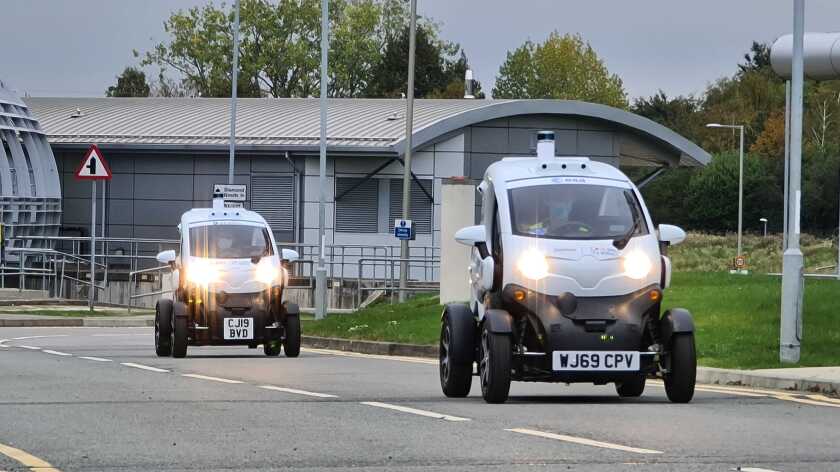The new facility forms part of Project Darwin, a four-year trial programme supported by O2 and the European Space Agency and based in the Harwell Science and Innovation Campus in Oxfordshire.
Named the Darwin SatCom Lab, the laboratory is available to companies looking to explore next-gen connectivity solutions for connected and autonomous vehicles (CAVs) using 5G and satellite.
“We’re delighted to announce that the Darwin SatCom Lab is now open for business at Harwell Campus, allowing companies to put theory into practice and test innovative ideas using our connected and autonomous vehicles,” said Derek McManus, COO at O2.
“The Lab is further proof that O2 is at the forefront of connectivity and accelerating Britain’s recovery by helping British businesses to harness the power of 5G and satellite communications in order to benefit their customers. It’s the next step in getting autonomous vehicles on the road and making the UK’s transport network greener.”
In addition, companies can test proofs of concept using two Renault TWIZY electric cars, which O2 has converted into CAVs and fitted with LIDAR sensors to allow them to be controlled from the lab and driven around the Harwell Campus.
Using 5G equipment provided by Nokia and geosynchronous communications satellites (GEOs) provided by Hispasat, the Spanish satellite operator, O2’s 5G Innovation team can remotely track the status of the CAVs, including their position, movement and speed.
“We are excited to continue working on 5G projects with our partners, especially the Darwin SatCom Lab located on the Harwell Campus, which is also home to the ESA’s European Centre for Space Applications and Telecommunications,” added Antonio Franchi, 5G strategic programme manager at the European Space Agency.
“The Lab, showcasing the integration of 5G and satellite communications for CAVs, is a great example of how next-gen 5G networks will enable new applications and services thanks to their ubiquity, security and resilience.”
One of the proofs of concept already being tested at the Darwin SatCom Lab tracks the CO2 emissions of the vehicles using the LIDAR sensors.
By using satellite imagery to see the areas the vehicles are travelling through and monitor local biodiversity, the laboratory team is able to calculate the emissions savings of taking different routes based on carbon capture from nearby trees.
O2 said that this research will inform how its retail partners carry out last mile deliveries, bringing goods such as groceries directly to their customers.






